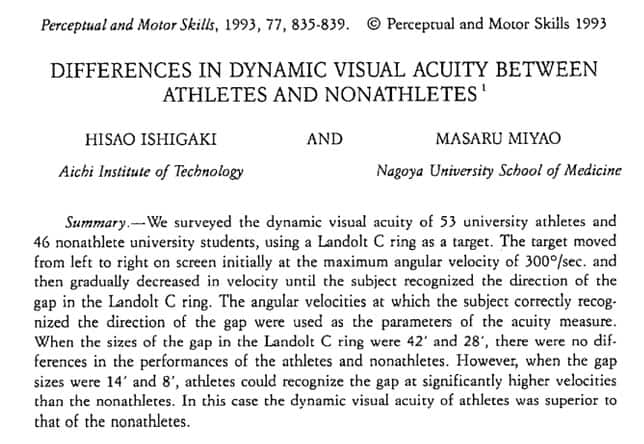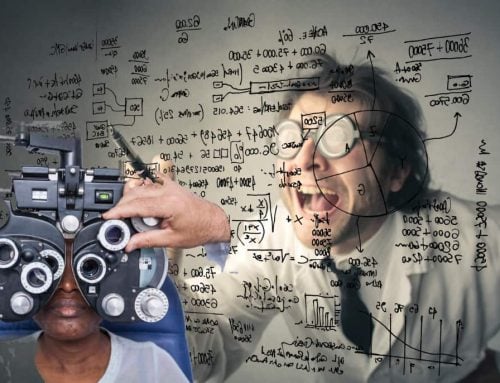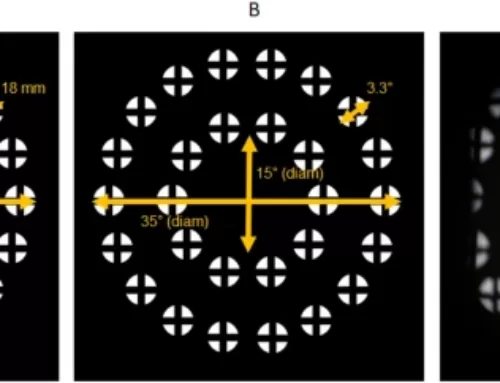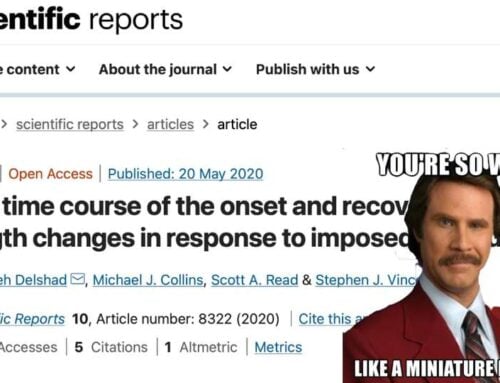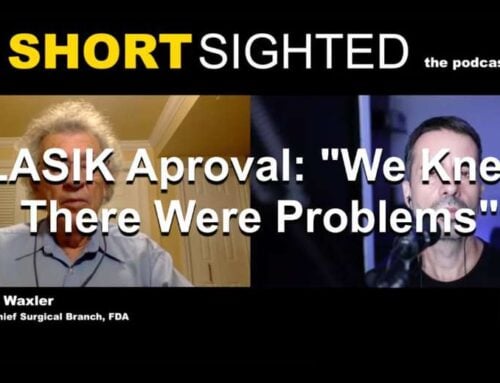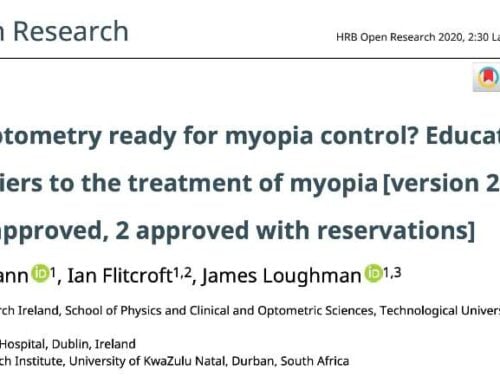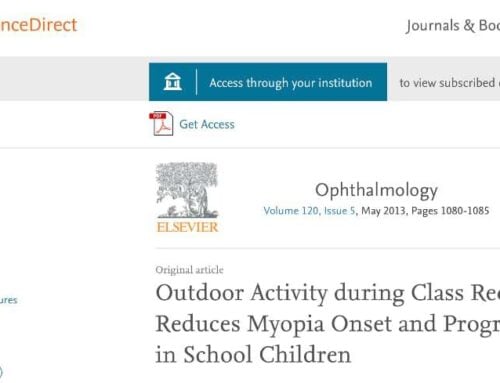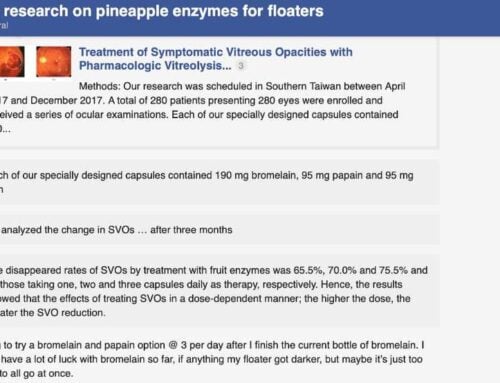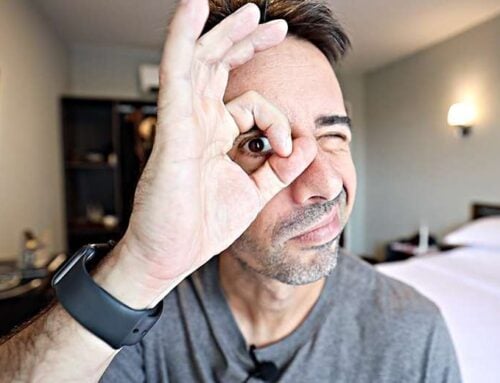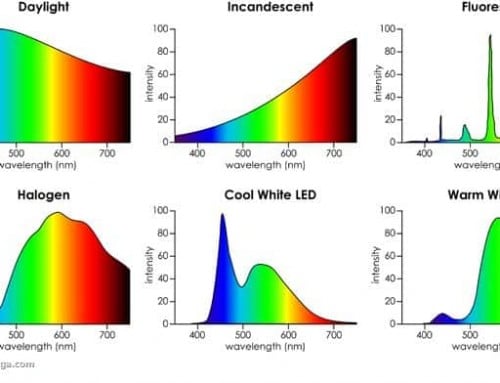So my friend wants to come visit at the hospital, see the small monkey.
She’s taking the skytrain which stops at a station conveniently just a few kilometers from the hospital. I tell here I’ll pick her up on the bike, help us dodge rush hour traffic. Since I haven’t slept properly in days and spent all my remaining time indoors and reading books, my eyesight isn’t amazing today. It’s also after dark and rainy, altogether not making for ideal vision to be taking responsibility for a passenger on a motorbike.
Don’t worry, though. Drugs to the rescue.
Here are a two things worth noting: One, your night time visual acuity if you are a 40 year old male, is probably barely around 20/20 at best. Incidentally a whole lot of official vision test requirements (not intended to sell you glasses) stipulate 20/40 vision as minimum passing grade, and they do measure in daylight. It’s just at the optometrist that you get the vision test in a dark room, going to 20/10 that you’re not likely to ever pass (without buying some glasses from the shop).
And thing number two, dynamic visual acuity.
Dynamic visual acuity is defined as being able to distinguish fine details of a moving object.
This is separate from static visual acuity, which is what we talk about almost exclusively here, and which also all that is being tested at the optometrist.
But that’s far from the full story of your eyesight.
Dynamic visual acuity is what comes into play when you’re driving your car. You may have 20/40 vision but excellent dynamic acuity, and things are comfortably clear as you cruise through the city. Likewise, you might have 20/20 vision but then still 60km/h might make you feel as though you can’t see well enough.
That’s where you want to become aware of that difference between the static measurement of looking at an eye chart, and the dynamic scenario of moving at speed.
The two are strongly correlated, but not the same thing.
With a majority of my students (offline, not here on the Web), we focus a lot on dynamic visual acuity. A lot of my students use their eyesight professionally and usually in moving scenarios (athletes, pilots, drivers, all relying on clear vision in moving object scenarios). You can train your dynamic visual acuity separately from the work we discuss here mostly, and end up being much more comfortable with your moving object vision regardless of your myopia degree.
To wit:
Intersting, right?
Since most of the audience here is primarily looking at improving their eyesight in terms of measurable static acuity, I generally don’t want to confuse the issue by adding too many other pieces.
So let’s get back to my steroid abuse for better eyesight.
I’m about to ride through rainy night time Bangkok, in rush hour traffic, on a motorbike with a passenger on the back. I’ve been sleepless and staring at book pages for days. Yes I should suggest she get a taxi, but I’m not being quite that responsible.
Instead, I grab a pair of -1.00 diopter glasses.
These are going to make up for the temporary poor vision and boost my dynamic visual acuity to boot. They are an overprescription for my scenario, but they are going to raise clarity to a degree that I’ll basically have supervision for the 30 minutes that I’ll need it for.
And what would you call that, besides doping the way athletes try to get away with in competitive sports? Yes, it’s not steroids. The title for this post, a little clickbait-ey. But it’s cheating, it’s using a controlled .. substance to augment my natural vision to a degree that is unlikely experienced by most average individuals my age.
Because you know, you don’t see 20/10 outside at night. Despite that being the exact scenario that most optometrist’s create when setting you up for glasses. Many prescription glasses are giving you unnaturally sharp vision.
Which is fine and good if you know you’re abusing an artificial focal plane changer, and you know how far you can take that.
Too far incidentally would be if I wore that -1.00 in regular daylight, while staring at my computer. That’s how I’d end up creating myopic stimulus, which is what you probably experienced, and why you read this blog in the first place.
Moral of the story?
Ask your friend to grab a cab, and pay when she arrives.
Or if you’re going to be irresponsible, grab your last, higher prescription in these fully adverse circumstances, and experience (almost) superhuman vision. Also notice how your eyes feel a pulling sensation after a few minutes and how after a mere 20-30 minutes your eyes get notably uncomfortable. Probably a familiar feeling if you remember whenever you first started wearing the next higher prescription from the optometrist.
And the other moral of the story, don’t wear that distance prescription from the optometrist during close-up.
And one more nugget on the subject of dynamic visual acuity:
We won’t get lost in this related topic today, just a quick nudge while we’re on dynamic visual acuity.
The full rabbit hole would be talking about just how much vision varies between male and female, relative to testosterone / estrogen exposure during fetal development. You might be amazed to find out how much depth perception, dynamic visual acuity, color perception and other factors vary based on prenatal development (and in a very coarse distinction method, by gender). Maybe another time, that one.
Lastly, if you want to see better in moving object scenarios, pick up a hobby or sport involving moving objects. ;-)
And even more lastly, the tiny one:

Tiny poop machine.
Cheers,
-Jake


